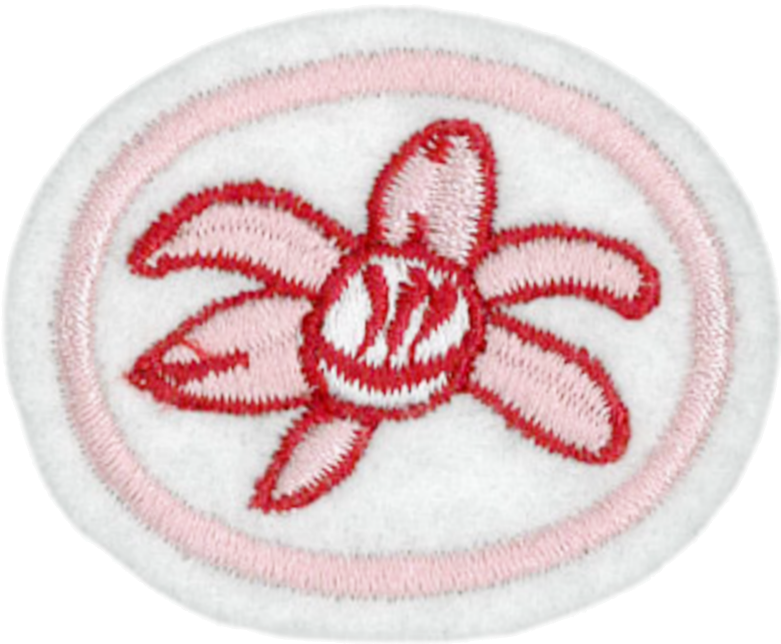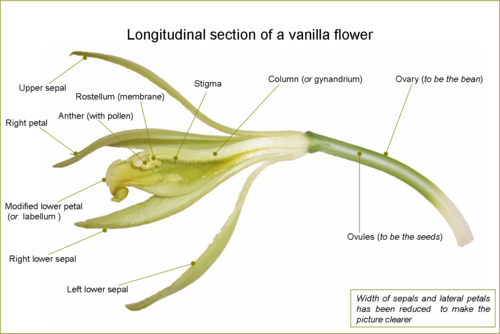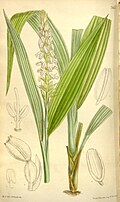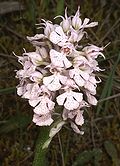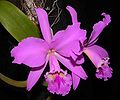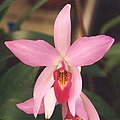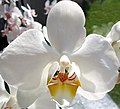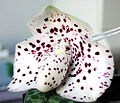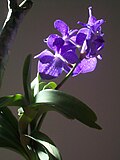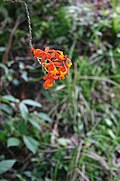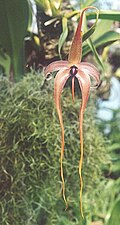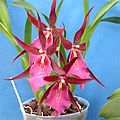Difference between revisions of "AY Honors/Orchids"
DesignerBot (talk | contribs) m (insert nowiki-Tag infront of the honor_landing-Template so there is no paragraph infront of the language selector) |
Jomegat bot (talk | contribs) m (Add honors to Naturalist/Flora Master) |
||
| Line 7: | Line 7: | ||
|authority=General Conference | |authority=General Conference | ||
|insignia=Orchids_Honor.png | |insignia=Orchids_Honor.png | ||
| + | |master1=Naturalist | ||
| + | |master_group1=Flora | ||
|overview= | |overview= | ||
|challenge= | |challenge= | ||
Revision as of 02:34, 23 January 2021
| Orchids | |
|---|---|
| Nature | |
Skill Level 123 | |
Approval authority General Conference | Year of Introduction 1964 |
See also | |
The most challenging requirement of this honor is probably this:
6. Discuss the main essentials to observe in the cultivation of orchids. Grow at least one orchid for at least six months.
1. Define the characteristics of an orchid.
2. What are the two main groupings of orchids? Name and show examples of each from a live plant or picture.
3. What are the differences between epiphytic, parasitic, and saprophytic orchids?
4. Discuss the distribution of orchids, making particular reference to the occurrence of these in your area.
5. Name the main cultivated genera of orchids. Identify three from plants or picture. What is cultivar?
6. Discuss the main essentials to observe in the cultivation of orchids. Grow at least one orchid for at least six months.
7. What are the main uses of orchids? What orchid is used commercially?
8. Know the laws in your area (if any) that protect wild orchids.
1
Orchids are monocot plants characterised by the presence of three sepals , two petals and the third petal modified as a lip.
2
There are five identified groupings of orchids. (Also see Taxonomy of the Orchid family)
- Apostasioideae: 2 group(s) in this sub-family and 16 species, south-western Asia
- Cypripedioideae: 5 group(s) in this sub-family and 130 species, mostly from the temperate regions of the world, some in tropical America
- Vanilloideae: 15 group(s) in this sub-family and 180 species, humid tropical and subtropical regions, eastern North America
- Epidendroideae: more than 500 group(s) in this sub-family and more or less 20 000 species, cosmopolitan
- Orchidoideae: 208 group(s) in this sub-family and 3,630 species, cosmopolitan
The last two, Epidendroideae and Orchidoideae are the largest subfamilies (main groupings).
3
Epiphytic
An epiphytic is an organism that grows upon or attached to a living plant.
Parasitic
Parasitic is symbiosis or "living together", a phenomenon in which two organisms which are unrelated co-exist over a long period of time, usually the lifetime of one of the individuals. A parasitic relationship does not benefit the host and can, in fact, be detrimental to it.
Saprophytic
A saprotroph (or saprobe) is an organism that obtains its nutrients from non-living organic matter, usually dead and decaying plant or animal matter, by absorbing soluble organic compounds. They cannot make food for themselves.
4
Distribution
Orchids are cosmopolitan, occurring in almost every habitat. The great majority are to be found in the tropics, mostly Asia, South America and Central America. They are found above the Arctic Circle, in southern Patagonia and even on Macquarie Island, close to Antarctica.
The following list gives a rough overview of their distribution:
- tropical America: 300 to 350 genera
- tropical Asia: 250 to 300 genera
- tropical Africa: 125 to 150 genera
- Oceania: 50 to 70 genera
- Europe and temperate Asia: 40 to 60 genera
- North America: 20 to 30 genera
5
Most cultivated orchids are tropical or subtropical, but quite a few which grow in colder climates can be found on the market.
Temperate species available at nurseries include:
- Ophrys apifera (bee orchid),
- Gymnadenia conopsea (fragrant orchid),
- Anacamptis pyramidalis (pyramidal orchid) and
- Dactylorhiza fuchsii (common spotted orchid).
The main cultivated genera of orchids is Epidendroideae.
6
- Light - is important in all living things.
- Temperature - mature plants need a 15-20 degree F temperature difference between day and night.
- Water - seedlings need more moisture, mature plants must dry out between watering.
- Humidity -
- Fertilizer - remember that these are usually parasitic plants.
- Potting - plant in material that allows good aeration and drainage.
The Wikipedia article Hippeastrum has detailed instructions for growing this orchid throughout the year. Another common houseplant orchid is the Cymbidium.
Another option is to grow your orchids using hydroponics, which satisfies a requirement of the Voyager curriculum. Again Wikipedia has an article called "Hydroponics for orchid cultivation" which is filled with important details.
Have a fun time growing your orchid(s).
7
Main Uses of Orchids
- The underground tubers of terrestrial orchids (mainly Orchis mascula) are ground to a powder and used for cooking, such as in the hot beverage salep or the so-called "fox-testicle ice cream" salepi dondurma.
- The scent of orchids is frequently analysed by perfumists (using Gas-liquid chromatography) to identify potential fragrance chemicals.
- The other important use of orchids is their cultivation for the enjoyment of the flowers.
What orchid is used commercially?
- Vanilla is a flavoring derived from orchids in the genus Vanilla native to Mexico. The name came from the Spanish word vainilla, meaning little pod.
8
The Navasota Ladies'-Tresses (Spiranthes parksii) is on the Federal endangered species list
Reason for Concern: Navasota ladies-tresses is endemic to the Oak Woodlands and Prairies region of east-central Texas. Once thought to be extremely rare, it is now known to be locally common in parts of its range. However, many of the sites are near an active coal stripmining operation. Other sites are within the area of Bryan-College Station and are threatened by the rapid development of this metroplex.
Pink Lady's Slipper
Cypripedium acaule, or Pink Lady's Slipper, is endangered in Nova Scotia, Canada, and in the U.S. States of Georgia, Tennessee, Illinois, and New York. Because of a fungus association needed for growth, and the high acid this plant needs, C. acaule is very difficult to grow in the average garden and is unlikely to survive any attempts at transplantation. It should not be removed or disturbed if found in nature.
Showy Lady's Slipper
Cypripedium reginae, or Showy Lady's Slipper is endangered (or extirpated) in the U.S. States of Arkansas, Connecticut, Illinois, Iowa, Kentucky, Maine, Maryland, Massachusetts, New Hampshire, New Jersey, New York, Ohio, Pennsylvania, and Tennessee.
References
Content on this wiki is generated by people like you, and no one has created a lesson plan for this honor yet. You could do that and make the world a better place.
See AY Honors/Model Lesson Plan if you need ideas for creating one.
- Pages using DynamicPageList3 parser function
- AY Honors/Lesson Plans
- AY Honors/Needs Lesson Plan
- AY Honors/Honors with an Advanced Option
- Has insignia image
- AY Honors/Naturalist Master Award/Flora
- AY Honors/Honor landing
- AY Honors/Nature
- AY Honors/Introduced in 1964
- AY Honors/Skill Level 1
- AY Honors/Approved by General Conference
